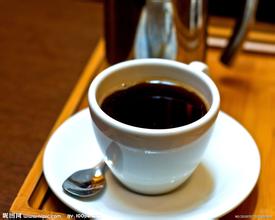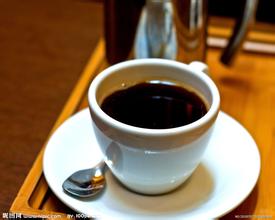Introduction to the Flavor and Taste Manor of Colombian Fine Coffee beans treated by Sun drying
Cauca province is similar to other southwest producing areas, the precipitation shows an obvious unimodal distribution (monomodal), and the dry season mainly occurs from August to September every year, followed by a concentrated coffee blossom season followed by the next year's concentrated coffee harvest season.
The biggest difference in climate between Cauca and other producing areas is probably the relatively large temperature difference, with a daily average temperature of 11 ℃ and a daytime average temperature of 18 ℃. The temperature difference between day and night is an important factor in quality coffee. Low night temperatures and relatively higher elevations slow down the growth of coffee, allowing coffee seeds and beans to more fully absorb the nutrients of coffee fruits, as well as better acidity and commendable special sweetness of Coca Coffee.
Colombian boutique coffee producing area: Cauca-Cafe de Cauca
In accordance with the fine tradition of Colombia, Coca Coffee is picked manually and washed. In addition, in order to pursue good disease resistance and higher yield, many coffee producing areas have updated the old varieties of coffee into new varieties, Cauca is rare to Katula Caturra species, in addition to tin card typica and bourbon Bourbon ancient species.
Colombian boutique coffee producing area: Cauca-Cafe de Cauca
The main taste features of Coca Coffee are reflected in its wonderful acidity and beautiful sweetness, coupled with the typical mild taste of Colombia, which makes the coffee in the area a competitive target for many buyers. High-quality Coca Coffee usually shows rich floral aroma, high acidity, pleasant sweetness, medium mellow, pure, mild and well-balanced taste.
This time, the new coffee product from Colombia comes from more than 700 small farmers in Popayan and its surrounding autonomous cities in Cauca province.
Variety: caturra,typica
Treatment: fully washed and sun-dried, there is the Popayan Plateau (Popayan plateur) between the eastern and western mountains of Cauca, the patia basin in the south, and the patia River flows from north to south into Narino province. The main producing area of Cauca is located on the north side of Patia. The producing area is surrounded by high mountains, which block the airflow and water vapor from the Pacific Ocean and trade winds from the south, thus maintaining a stable climate. Near the equator, there is plenty of sunshine. The stable climate and sufficient sunshine provide a guarantee for the stability of coffee quality. Cauca is a certified area of Colombian coffee origin, with an average elevation of 1758m and a maximum elevation of 2100m. The topography, precipitation, temperature and volcanic soil of the area prepare suitable conditions for the growth of coffee.
Cauca Province is 80% mountainous, with parallel mountain systems in the east and middle, part of the Andes, the central mountain system includes two main volcanoes, Sotara and Petacas, and the Huila Mountain, which is covered with snow all the year round. Benefiting from volcanic dust, the soil in the producing area provides adequate nutrition for coffee growth.

Important Notice :
前街咖啡 FrontStreet Coffee has moved to new addredd:
FrontStreet Coffee Address: 315,Donghua East Road,GuangZhou
Tel:020 38364473
- Prev

Full grain Rwandan coffee flavor Manor introduction
Rwandan coffee market: Rwandan coffee is absolutely superior in its washed Arabica bean form. As far as Africa is concerned, its coffee industry stands out because the country thrives mainly on producing the best possible coffee beans. Rwandan coffee is gaining increasing popularity on the international market. The mission of the Rwanda Coffee Association is to manage and supervise the coffee production in Rwanda.
- Next

Hawaiian Kona Coffee Flavor Flavor Manor area introduces boutique coffee
Hawaii's most famous coffee bean and coffee producing area is Kona kona, which is located in the southwest of the Big Island, 20 miles long and 2 miles wide, covering the slopes of Hualalai and Mauna Loa. Only coffee beans grown in this area and subject to the most stringent certification standards can be sold under the trademark Kona. Today, coffee beans are produced by about 100 farms.
Related
- Detailed explanation of Jadeite planting Land in Panamanian Jadeite Manor introduction to the grading system of Jadeite competitive bidding, Red bid, Green bid and Rose Summer
- Story of Coffee planting in Brenka region of Costa Rica Stonehenge Manor anaerobic heavy honey treatment of flavor mouth
- What's on the barrel of Blue Mountain Coffee beans?
- Can American coffee also pull flowers? How to use hot American style to pull out a good-looking pattern?
- Can you make a cold extract with coffee beans? What is the right proportion for cold-extracted coffee formula?
- Indonesian PWN Gold Mandrine Coffee Origin Features Flavor How to Chong? Mandolin coffee is American.
- A brief introduction to the flavor characteristics of Brazilian yellow bourbon coffee beans
- What is the effect of different water quality on the flavor of cold-extracted coffee? What kind of water is best for brewing coffee?
- Why do you think of Rose Summer whenever you mention Panamanian coffee?
- Introduction to the characteristics of authentic blue mountain coffee bean producing areas? What is the CIB Coffee Authority in Jamaica?

